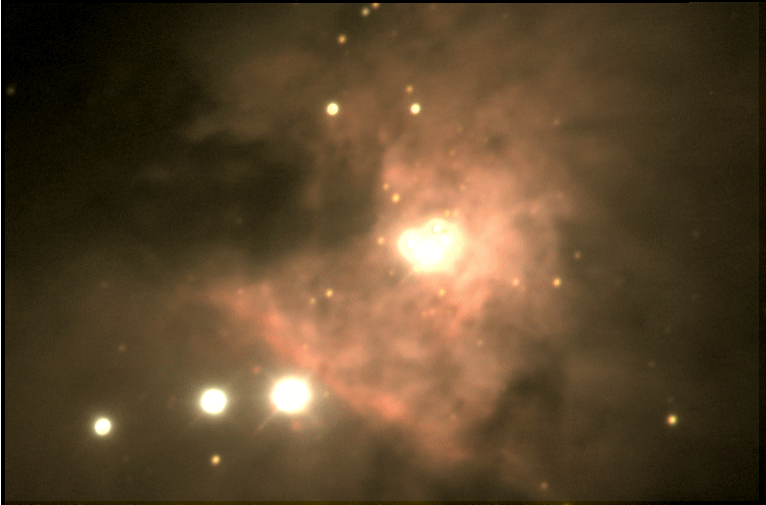
Image information: RVB combination of stacked, dark-subtracted, registered images. Image comprises of 20 x 4s R-band images, 24 x 3s V-band images, 16 x 6s B-band images. The image has undergone contrast stretching and a deconvolution filter to enhance clarity, and approximate response weightings to try to match colours with reality. Image taken 14/01/2006 20:00-21:00.
Physical information: Magnitude: 4.0, size: 90'x60', aka Orion Nebula.
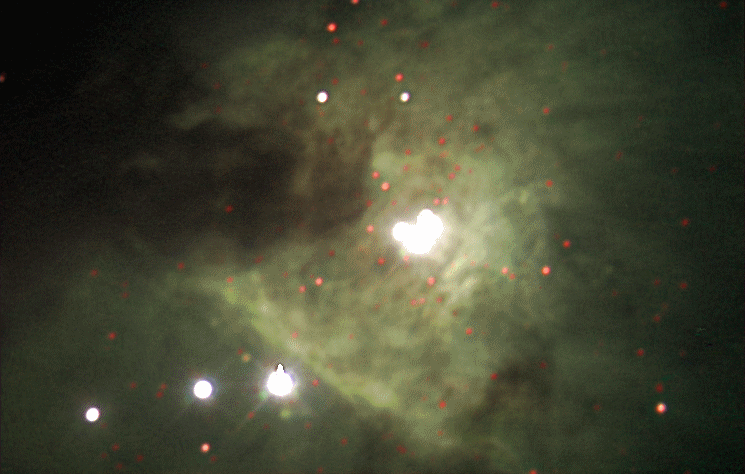
Image information: IRV combination of stacked, dark-subtracted, registered images. Image comprises of 50 x 1s I-band images, 20 x 4s R-band images, 24 x 3s V-band images. The image has undergone contrast stretching and a deconvolution filter to enhance clarity, and approximate response weightings to try to match colours with reality. Image taken 14/01/2006 20:00-21:00.
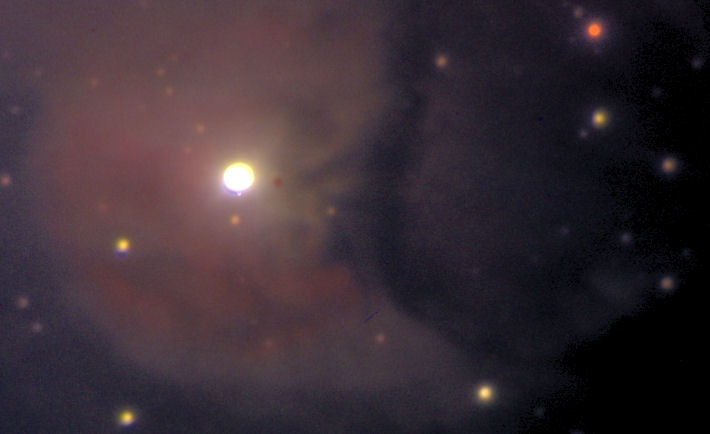
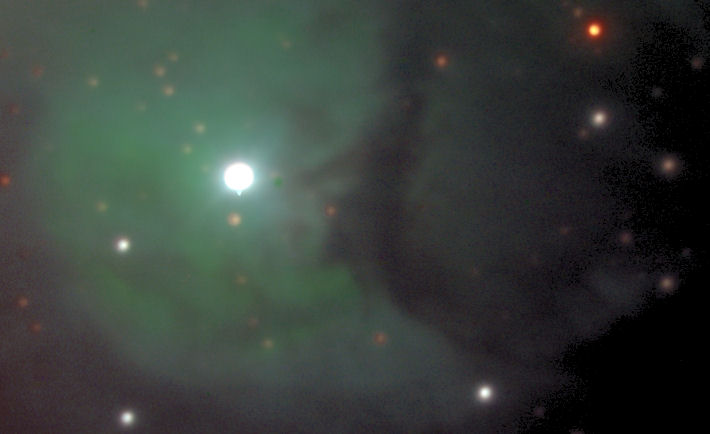
The first image is true colour, which shows the bright star which ionises the nebula, stripping the electrons from the hydrogen atoms. When the electrons recombine, they emit a reddish glow. A dark dust lane runs down the middle of the image - this is interstellar dust, which is roughly similar to coal dust, and forms a barrier through which light doesn't very easily penetrate.
If we look in the second image, we are looking in infrared, which allows us to more readily see through the dust to the stars behind the nebula. Note the bright, red star in the top-right.
Image information: Images are RVB- and IRV-band combinations of 16 x 10s images in each band, plus 56 x 10s images in unfiltered light as a luminosity channel. Images have been stacked, calibrated and registered in AIP4Win, and cropped and compressed in Paint Shop Pro. Images taken 01/11/2006 00:00.
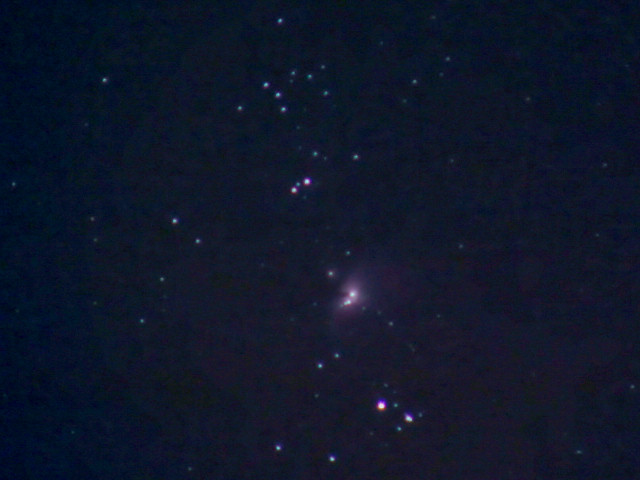
Image information: Sony DSC-H1, piggy-backed onto the back of the Keele 12-inch refractor. Images taken 11/11/2007 22:42.